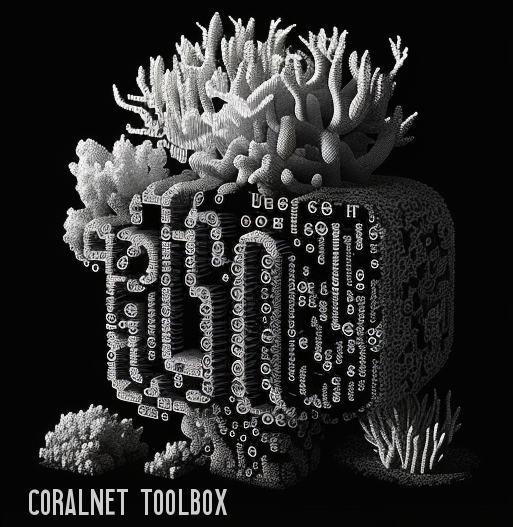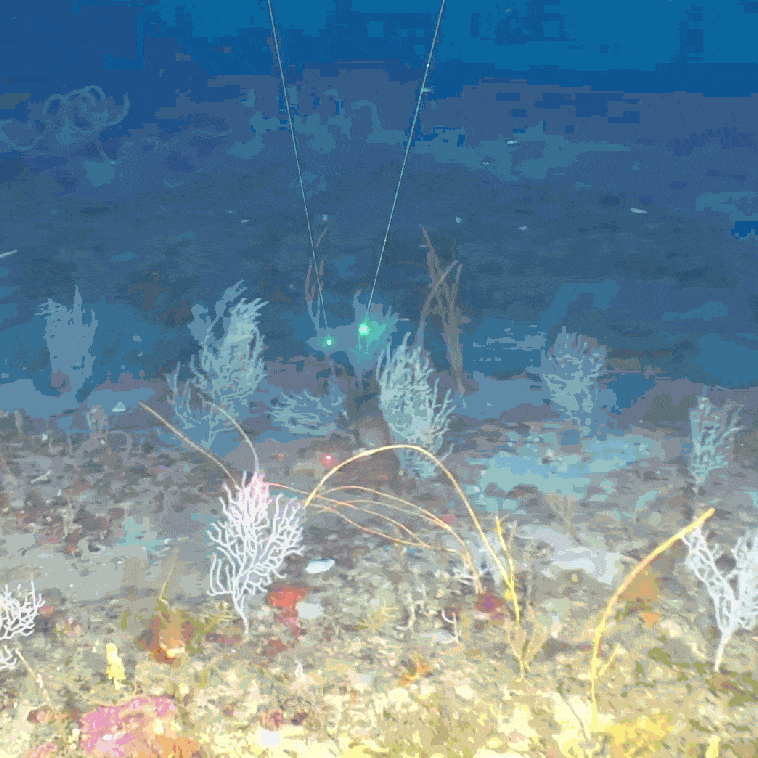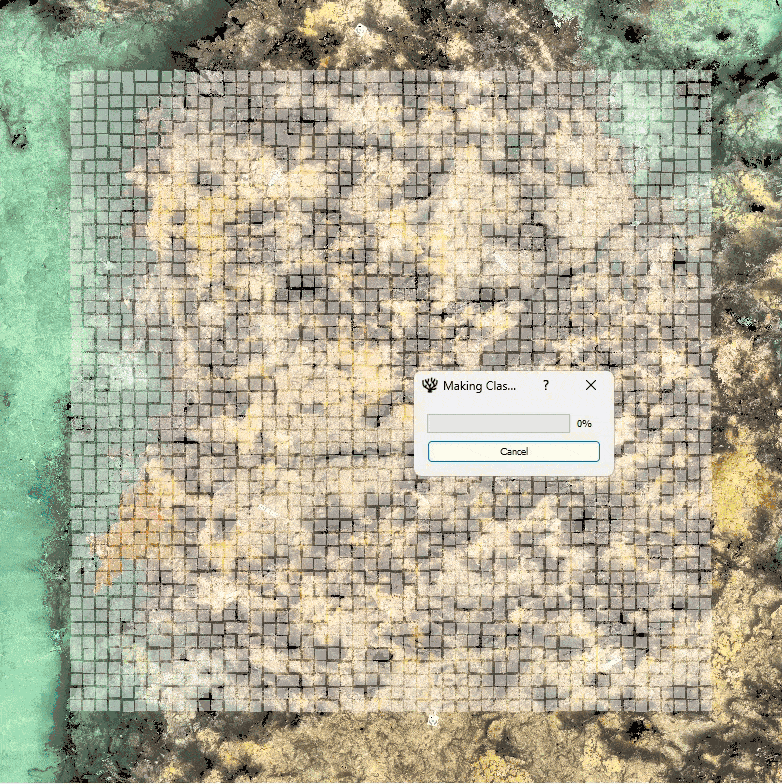Running the following command will install the coralnet-toolbox, which you can then run from the command line:
# cmd
# Install
pip install coralnet-toolbox
# Run
coralnet-toolboxFor further instructions please see the following:
The CoralNet-Toolbox is an unofficial codebase that can be used to augment processes associated with those on
CoralNet.
It uses✨Ultralytics🚀 as a base, which is an open-source library for
computer vision and deep learning built in PyTorch. For more information on their AGPL-3.0 license, see
here.
The toolbox also uses the following to create rectangle and polygon annotations:
Enhance your CoralNet experience with these tools:
- 🎬 Rasters: Import images, or extract frames directly from video files
- ✏️ Annotate: Create annotations freely
- 👁️ Visualize: See CoralNet and CPCe annotations superimposed on images
- 🔬 Sample: Sample patches using various methods (Uniform, Random, Stratified)
- 🧩 Patches: Create patches (points)
- 🔳 Rectangles: Create rectangles (bounding boxes)
- 🟣 Polygons: Create polygons (instance masks)
- 🦾 SAM: Use
FastSAM,CoralSCOP,RepViT-SAM,EdgeSAM,MobileSAM, andSAMto create polygons- Uses
xSAM
- Uses
- 🧪 AutoDistill: Use
AutoDistillto accessGroundingDINOfor creating rectangles - 🧠 Train: Build local patch-based classifiers, object detection, and instance segmentation models
- 🔮 Deploy: Use trained models for predictions
- 📊 Evaluation: Evaluate model performance
- 🚀 Optimize: Productionize models for faster inferencing
- ⚙️ Batch Inference: Perform predictions on multiple images, automatically
↔️ I/O: Import and Export annotations from / to CoralNet, Viscore, and TagLab- 📸 YOLO: Import and Export YOLO datasets for machine learning
- 🧱 Tile Dataset: Tile existing Detection / Segmentation datasets
- Uses
yolo-tiling
- Uses
- 🏁 Tile Inference: Perform Tile Inference on large images
- 🔍 API: Get predictions from any CoralNet source model
- 📥 Download: Retrieve source data from CoralNet
- 📤 Upload: Add images and annotations to CoralNet
- 📦 Toolshed: Access tools from the old repository
It's recommended to use Anaconda to create an environment for the toolbox:
# cmd
# Create and activate an environment
conda create --name coralnet10 python=3.10 -y
conda activate coralnet10Once this has finished, install the toolbox:
# cmd
# Install
pip install coralnet-toolboxIf you have CUDA, you should install the versions of cuda-nvcc and cudatoolkit that you
need, and then install the corresponding versions of torch and torchvision. Below is an example of how that can be
done using CUDA version 11.8:
# cmd
# Example for CUDA 11.8
conda install nvidia/label/cuda-11.8.0::cuda-nvcc -y
conda install nvidia/label/cuda-11.8.0::cuda-toolkit -y
# Example for torch w/ CUDA 11.8
pip install torch torchvision --index-url https://download.pytorch.org/whl/cu118 --upgradeIf CUDA is installed on your computer, and torch was built with it properly, you should see a 🐇 icon in the
toolbox instead of a 🐢; if you have multiple CUDA devices available, you should see a 🚀 icon,
and if you're using a Mac with Metal, you should see an 🍎 icon (click on the icon to see the device information).
See here for more details on versions for the following:
Finally, you can run the toolbox from the command line:
# cmd
# Run
coralnet-toolboxCoral reefs are vital ecosystems that support a wide range of marine life and provide numerous benefits to humans. However, they are under threat due to climate change, pollution, overfishing, and other factors. CoralNet is a platform designed to aid researchers and scientists in studying these important ecosystems and their inhabitants.
CoralNet allows users to upload photos of coral reefs and annotate them with detailed information about the coral species and other features present in the images. The platform also provides tools for analyzing the annotated images, and create patch-based image classifiers.
The CoralNet-Toolbox is an unofficial tool developed to augment processes associated with analyses that use CoralNet and Coral Point Count (CPCe).
In summary, this repository provides a range of tools that can assist with interacting with CoralNet and performing various tasks related to analyzing annotated images. These tools can be useful for researchers and scientists working with coral reefs, as well as for students and hobbyists interested in learning more about these important ecosystems.
If used in project or publication, please attribute your use of this repository with the following:
@misc{CoralNet-Toolbox,
author = {Pierce, Jordan and Edwards, Clinton and Rojano, Sarah and Cook, Sophie and Sweeney, Edward and Costa, Bryan and Vieham, Shay and Battista, Tim},
title = {CoralNet-Toolbox},
year = {2023},
howpublished = {\url{https://github.com/Jordan-Pierce/CoralNet-Toolbox}},
note = {GitHub repository}
}
This repository is a scientific product and is not official communication of the National Oceanic and Atmospheric Administration, or the United States Department of Commerce. All NOAA GitHub project code is provided on an 'as is' basis and the user assumes responsibility for its use. Any claims against the Department of Commerce or Department of Commerce bureaus stemming from the use of this GitHub project will be governed by all applicable Federal law. Any reference to specific commercial products, processes, or services by service mark, trademark, manufacturer, or otherwise, does not constitute or imply their endorsement, recommendation or favoring by the Department of Commerce. The Department of Commerce seal and logo, or the seal and logo of a DOC bureau, shall not be used in any manner to imply endorsement of any commercial product or activity by DOC or the United States Government.
Software code created by U.S. Government employees is not subject to copyright in the United States (17 U.S.C. §105). The United States/Department of Commerce reserve all rights to seek and obtain copyright protection in countries other than the United States for Software authored in its entirety by the Department of Commerce. To this end, the Department of Commerce hereby grants to Recipient a royalty-free, nonexclusive license to use, copy, and create derivative works of the Software outside of the United States.











